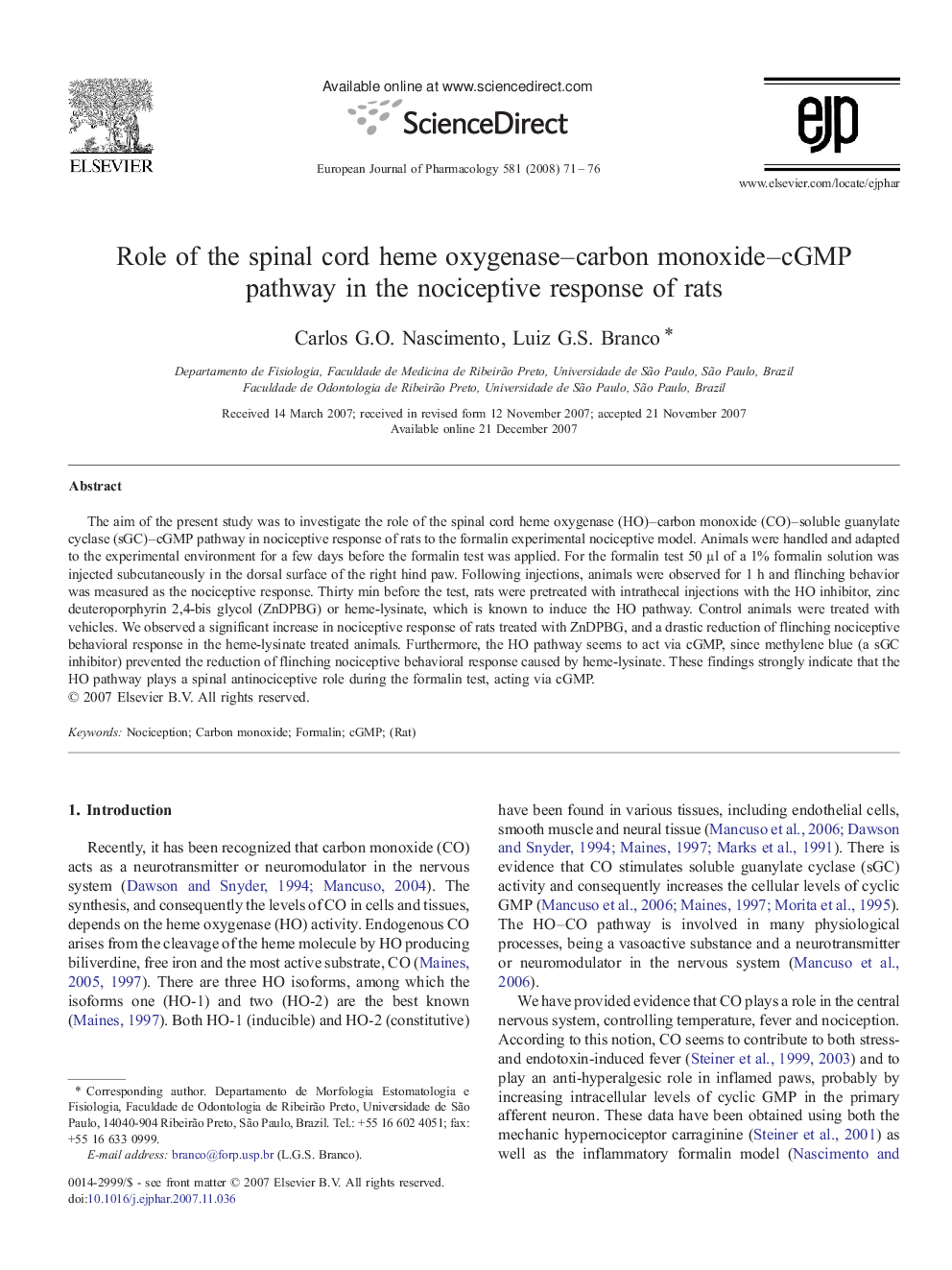| Article ID | Journal | Published Year | Pages | File Type |
|---|---|---|---|---|
| 2535505 | European Journal of Pharmacology | 2008 | 6 Pages |
The aim of the present study was to investigate the role of the spinal cord heme oxygenase (HO)–carbon monoxide (CO)–soluble guanylate cyclase (sGC)–cGMP pathway in nociceptive response of rats to the formalin experimental nociceptive model. Animals were handled and adapted to the experimental environment for a few days before the formalin test was applied. For the formalin test 50 µl of a 1% formalin solution was injected subcutaneously in the dorsal surface of the right hind paw. Following injections, animals were observed for 1 h and flinching behavior was measured as the nociceptive response. Thirty min before the test, rats were pretreated with intrathecal injections with the HO inhibitor, zinc deuteroporphyrin 2,4-bis glycol (ZnDPBG) or heme-lysinate, which is known to induce the HO pathway. Control animals were treated with vehicles. We observed a significant increase in nociceptive response of rats treated with ZnDPBG, and a drastic reduction of flinching nociceptive behavioral response in the heme-lysinate treated animals. Furthermore, the HO pathway seems to act via cGMP, since methylene blue (a sGC inhibitor) prevented the reduction of flinching nociceptive behavioral response caused by heme-lysinate. These findings strongly indicate that the HO pathway plays a spinal antinociceptive role during the formalin test, acting via cGMP.
